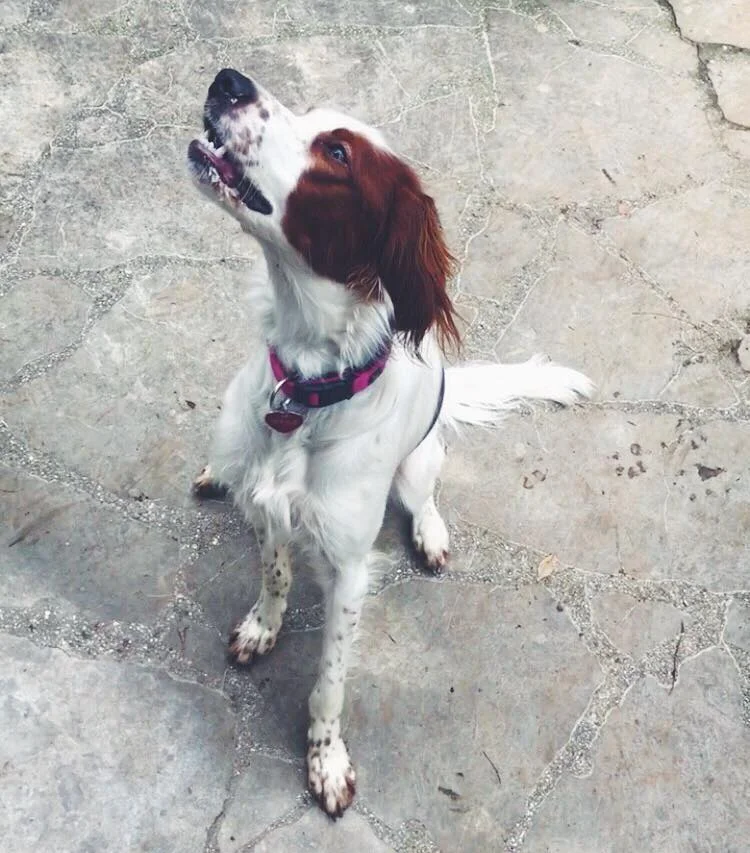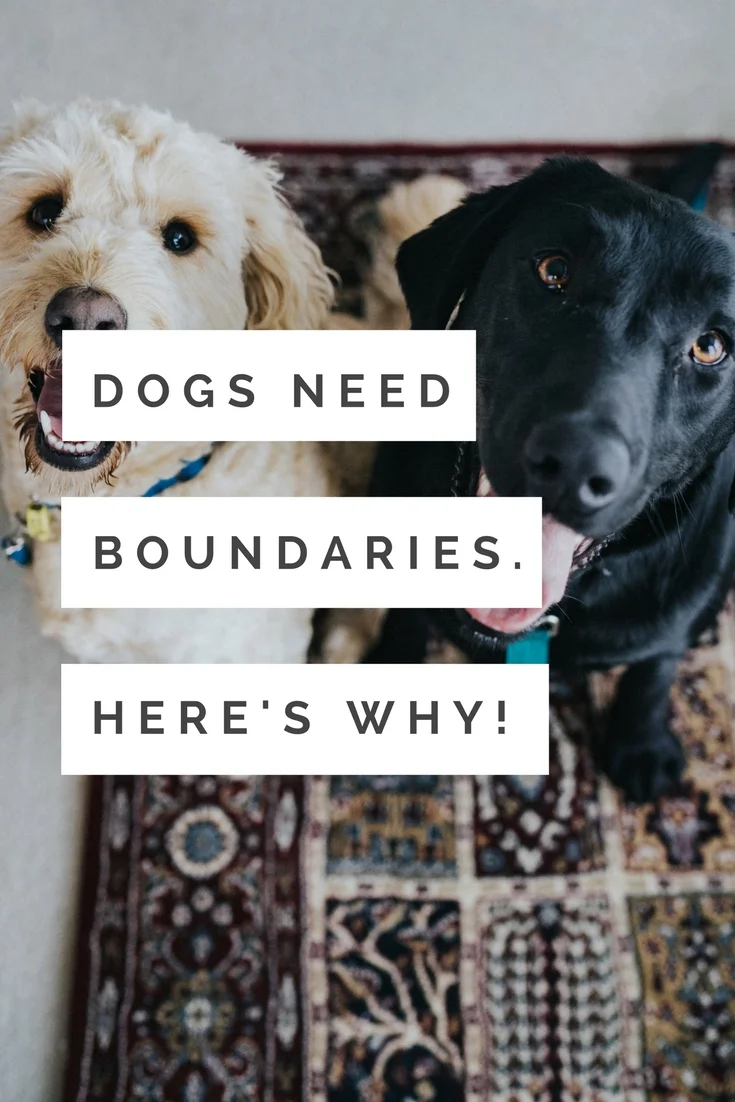Positive Reinforcement is Not Permissive Upbringing
/I’ve been noticing a pattern of thinking among some dog parents lately and I feel called to address it. It’s the belief that positive reinforcement equals permissive upbringing. I already wrote a little bit about what positive reinforcement represents to me in this blog post, but I wanted to write a separate post to address some main concerns about force-free training that people often have.
A lot of people (myself included) have been raised with a lot of punishment. Modeling what we’ve seen our parents do (and sometimes other people as well), we develop a belief that only punishment can show someone what’s wrong. I mean, how else would they know, right?
Here’s where it gets tricky - punishment may show someone what’s unwanted behavior, but it doesn’t show them WHY this behavior is unwanted and WHAT they should do instead.
Growing up in an environment where punishment is the main choice of “discipline” often leaves us confused and unsure about how to establish constructive communication. We simply try to avoid being punished, often not knowing what the hell we should do to please the one who punishes us. The same thing happens to our dogs.
Because the popular media and the self-proclaimed “dog whisperers” have convinced millions of people that dogs need to be “dominated” and that you have to be the “alpha” (despite the fact that “dominance theory” has been disproven by the same guy who came up with it and many other scientists as well), people take on the burden of being the disciplinarian. This is a tough role, a heavy cross to bear. You are expected to be strict, firm, loud and sharp. You’re not allowed to feel bad for the dog you’re disciplining because (like your disciplinarians have told you), “this is for his own good!!!!”
Let me stop you right there and first tell you that we can all be so much better than this. We can be so much better than raising our most loved and vulnerable creatures with fear and intimidation. We don’t have to repeat this cycle of fear, just because we don’t know what else to do. It’s on this point that I often run into a pushback from other dog parents. They genuinely don’t know how to explain to their dog what they want, because nobody ever taught them how.
As people, we have incredible difficulty communicating with our own species, let alone a different one. It’s normal to feel confused about this. It’s normal to feel a bit helpless. After all, you are on the beginning of a very big learning experience, aren’t you? This fear of the unknown and confusion about everything we have been taught for decades usually leads to people having strong misconceptions about positive reinforcement. Again, this is a totally normal response, but I would like to highlight that it’s your responsibility as a dog parent to always seek knowledge about constructive ways to communicate with your dog. Always!
One of such ways is setting up solid boundaries.
The Role of Boundaries
I always say that boundaries are my favorite thing in the world. I love them in all of my relationships, including the one I have with my dogs. Boundaries are essential, but there is always a kind and loving way to set them. People can be a little more complicated, but at least with dogs you’re setting a boundary to someone that always wants to please you. Boundaries are the foundation of any good relationship. Just like you explain to your boyfriend that you need Saturday brunch with your best friend to stay sane, you can explain to your dog that when you’re working at the computer, he needs to leave you alone. Just like you explain to your mom that she can’t come over unannounced, you can explain to your dog that paws don’t belong on the dining table. Kapish?
Let’s look at how you can set these boundaries in a way that doesn’t include force or punishment. Instead of yelling at your dog for stealing food from the table, you can simply set up a routine where every time you sit down to eat, he has to wait in his crate or on his dog bed. You can also set up a baby gate on your kitchen door or keep him in another room. No fuss, no yelling. Just a simple way of saying “Hey, when I’m eating, this really has nothing to do with you and it’s best if you wait outside the kitchen.” You can even give him a chew toy in the beginning stages of reinforcing this boundary to really make it clear that when you’re sitting at the table, he has something better to do than trying to steal your food.
It’s funny that people think positive reinforcement means the lack of boundaries because it’s actually quite the opposite: positive reinforcement is built on boundaries!
The more you set clear boundaries, the less you’ll have to argue with your dog. Prevention is one of the greatest tools in force-free training. When something goes wrong, don’t ask yourself how can you punish your dog. Ask yourself “How can I prevent this in the future?”
Do you see the difference? Punishment puts all the blame and responsibility on your dog, but positive reinforcement puts the responsibility on you - where it belongs! If you have been calling your dog for the past 10 minutes and he’s still not coming back it’s not your dog’s fault, dear friend. It’s your fault and your responsibility. You have a responsibility to teach him a reliable recall and to not let him off the leash if the recall isn’t solid enough. You see how this works?
Positive reinforcement is NOT permissive upbringing because it’s built on boundaries and prevention. It’s built on us recognizing our own responsibility.
If you were raising your dog in a permissive way, this would mean that your dog is always off the leash even though he doesn’t understand the concept of recall, it would mean that he runs up to every dog he sees and is disrespectful of their personal space, it would mean that he can get your attention whenever and however he wants, that he controls when you go out on a walk and when he eats and when he plays (usually with constant whining or barking at the owner until he finally gives into the dog’s wishes) and so on. The thing about permissive upbringing is that it has its limits. At one point, the permissive dog owner loses his temper and - you’ve guessed it - yells at the dog and punishes him.
These dogs don’t feel safe at all - they feel confused and exhausted because they always have to be in control. If your dog barks at you three times a day to feed him and four times a day to let him out and he's constantly whining until you give him attention and when you want to work he keeps bringing you toys ... your dog is not happy. He is irritated from all the extra responsibility that should have been on YOU! Failing to provide a stable environment is not good upbringing at all. Failing to provide safety and structure results in our dogs striving to provide it for themselves, usually in very unhealthy ways.
You see now that positive reinforcement doesn’t mean anarchy, it means that we recognize our dog’s needs and tend to them in the kindest way possible. It means that we step up to constructive communication and always, always learn about how we can parent them in a way that respects their integrity.
Unwanted Behaviors - Do We Just Ignore Them?!
Some people believe that unwanted behaviors should just be ignored and once the dog figures out they won’t grant him any attention, he’ll likely stop with them. I absolutely DISAGREE with this. Sure, some things that our dogs do are attention seeking indeed, but most of them aren’t. Most unwanted behaviors are a result of some kind of a frustration and they are our dog’s way of telling us something is not okay. If we just ignore these behaviors, we’re essentially failing our dog.
So how can we stop the negative behaviors without using force? Can we use any corrections at all? What about the word “no”?
When an unwanted behavior is in motion, there are numerous things you can do. First, you can simply call the dog by his name and ask him to come to you. That immediately puts a stop to whatever he’s doing. You can also offer him a different behavior to do instead. For example, if he’s trying to jump on you, ask him to sit or lie down. In order to do that, you’ll need to have some solid behaviors already in place, of course.
Some people don’t believe in using the word “no” within the frames of positive reinforcement, but personally I’m not too touchy about it. The reason is because “no” is just a word and it means nothing to our dogs until we give it a meaning. You can use any other word that means “stop what you’re doing.” I know a lot of people use “leave it.” Personally, I do use the word “no”, but it’s introduced to my dogs during their basic training and carries the same connotation for them as any other word. It’s simply a cue that means “stop what you’re doing” and it’s always followed by a behavior I would like them to do instead! On this note, I do recognize that people often abuse the word "no" by repeatedly saying "Nooooo. No. No!!!!!!!!!! NOOOOOO!!!!! HEY, NO!" If you are doing this, ditch the word altogether because your dog doesn't really have a good association with it.
Whatever “interrupter” you use, please make sure you’re not just telling your dog what they shouldn’t be doing and failing to provide an alternative behavior. Make sure the dog knows what you want from him!
Lastly, you can simply distract your dog with something else - this is usually the technique that works best with puppies who don’t have any solid behaviors yet. Use a toy or food to distract your dog from whatever else he is doing. Show him that if he follows your lead, exciting things happen!
Don’t forget that all of these ways of “correcting” a behavior only serve the purpose of interrupting the unwanted behavior in the moment that it’s happening, but after that it’s your responsibility to make sure that the unwanted behavior doesn’t get the chance to repeat itself. You can do that by implementing - let’s say it together kids - boundaries and prevention!
I hope I was able to clarify some positive reinforcement misconceptions with this blog post and that you’re walking away from it more secure in the next steps you’ll be taking with your training. Above all, I hope that I was able to bring positive reinforcement closer to some of you that are still struggling with the concept of it.
What does positive reinforcement represent to you? How do you set your boundaries? Please share your point of view in the comments below!
Do you like what you've just read? Share it on Pinterest!





